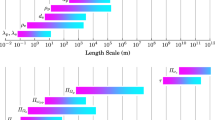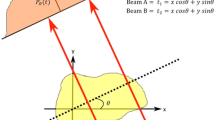Abstract
Planar laser-induced fluorescence (PLIF) of seeded nitric oxide was used to obtain mean 2-D temperature and pressure fields in the near-wake region of a thick flat plate in a Mach 3 flow. A two-line ratio technique was used to obtain the temperature field, while an image obtained at the limit of low quenching rate was used to infer the pressure field. An analysis shows that these time-average measurements can suffer from significant weighted averaging bias errors in regions where there are large temperature fluctuations; however, these bias errors can be minimized by judicious selection of the absorption lines used. The resulting temperature field reveals the warm upstream boundary layer, the temperature jump across the recompression shocks and the expected minimum and maximum temperatures in the expansion and recirculation regions, respectively. The pressure measurements indicate a uniform low pressure in the base region, a rapid increase near reattachment, followed by a gradual approach to the free stream value farther downstream.
Similar content being viewed by others
Author information
Authors and Affiliations
Additional information
Received: 25 July 1996 / Accepted: 11 September 1997
Rights and permissions
About this article
Cite this article
Lachney, E., Clemens, N. PLIF imaging of mean temperature and pressure in a supersonic bluff wake. Experiments in Fluids 24, 354–363 (1998). https://doi.org/10.1007/s003480050183
Issue Date:
DOI: https://doi.org/10.1007/s003480050183




